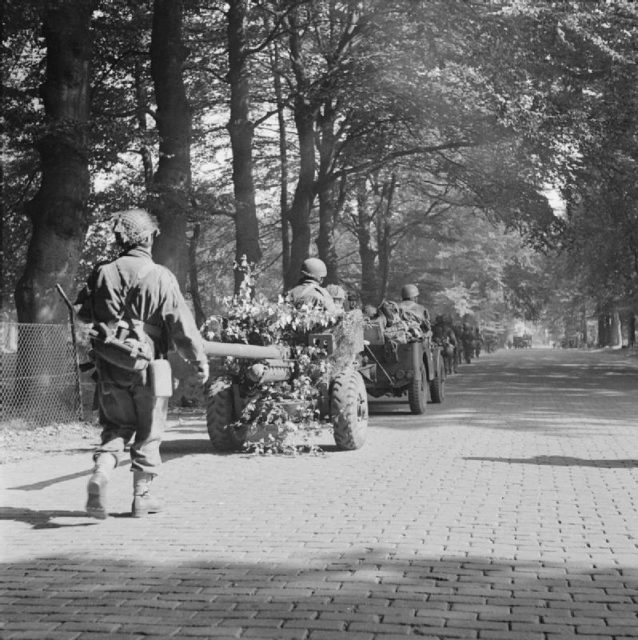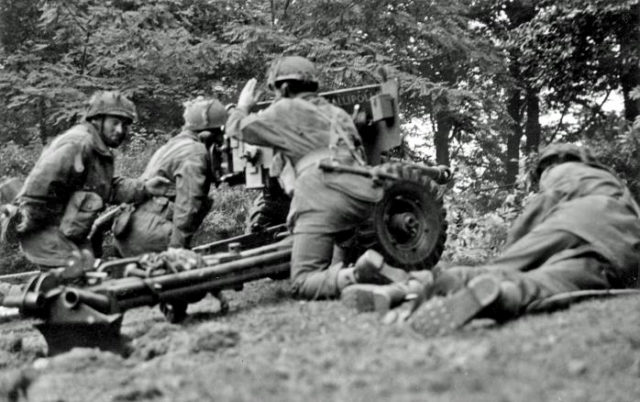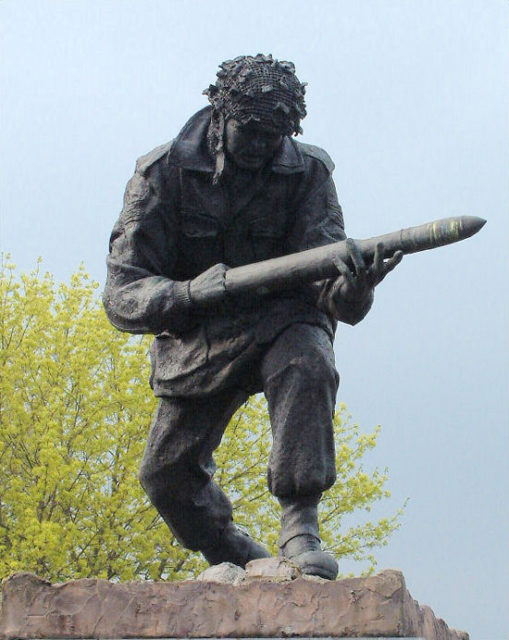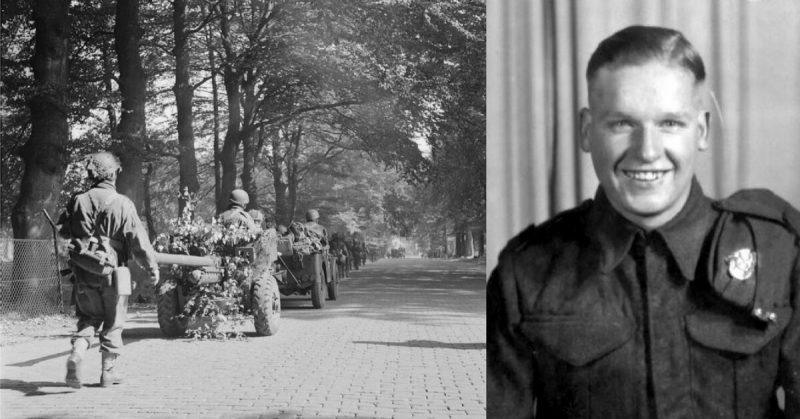As a civilian, John Baskeyfield spent his time as a butcher, but during the Battle of Arnhem, he turned his skills to a different type of killing.
After being called up to the Army in 1941 aged just 19, Baskeyfield was assigned to the 2nd Battalion, South Staffordshire Regiment. As an air landing unit of the 1st Airborne Division, the 2nd Battalion saw action in Sicily and Italy before being deployed in Operation Market Garden and Arnhem.
The Victoria Cross winner was born in Burslem, in Stoke-on-Trent. After receiving his call-up papers, the man went into the South Staffordshire Regiment and spent time with his battalion’s anti-tank platoon.
Baskeyfield saw his first taste of the action during Operation Ladbroke, which was the glider phase of the Invasion of Sicily in 1943. Previous to that, he spent time in North Africa with the 1st Airlanding Brigade.
Because the 1st Airborne Division wasn’t used for the invasion of Normandy, they were fresh for Operation Market Garden and especially the Battle of Arnhem.
Market Garden was part of an attempt to capture a number of bridges that would secure passage through the Netherlands.
In conjunction with the Polish 1st Independent Parachute Brigade, the British 1st Airborne were ordered to take bridges around the Lower Rhine. This would be their final objective for the operation.

However, a failure of intelligence led to those attacking units being dropped into a maelstrom of German heavy infantry, resulting in terrible casualties during the subsequent battle.
The whole area was swarming with the 9th and 10th SS Panzer divisions, who were in Arnhem for recuperation and a refit. Alongside the tanks was a substantial number of Panzergrenadiers and self-propelled guns to compliment the Axis forces defenses.
As a result of this, the Allies were cut down in droves during the attack. Only a small number of men managed to reach an objective, the Arnhem Road Bridge, which they held until being overrun on the 21st of September – just four days after landing in the Netherlands.
The whole sorry affair was over on the 25th of September when the division was evacuated in Operation Berlin. The Allied forces would fail to cross the Rhine until March 1945.
Because the Allies were short on planes, the plan was to fly the South Staffordshire Battalion to their targets on two different days. Most of them, along with the anti-tank guns, arrived at Arnhem on the first day, but the second only reach the ground on the second.
One of the commanders on the ground, Major General Roy Urquhart, wanted the 1st Airlanding Brigade to secure the drop zone so that subsequent flights of men and equipment could come in unimpeded.
However, the British advance to the landing zone was fraught with difficulty. Only small parts of the 2nd Battalion, 1st Parachute Brigade managed to reach the bridge – while the 1st and 3rd Battalions could not fight their way through the outer ring of the city.
To support this advance, the units from the South Staffordshire Battalion that landed on the first day were sent forward on the 18th of September. On the second day, the remaining men were also ordered into the fight, and they arrived at the suburbs later that evening.

The next day an attack was launched between the river and the railway line. The objective of the fighting was to force an opening through to the bridge, but because of the circumstances of the attack most of the support weapons were left at the back.
The fighting was fierce and the German defense unrelenting. This narrow attack in which the men could not use any supporting weapons was a failure, with the British units routed in the face of the defenders.
The four battalions that were left over from the assault fell back to Oosterbeek, which housed the main divisional positions.
Lieutenant Colonel Sheriff Thompson, who was the commanding officer of the 1st Airlanding Light Artillery Regiment, then organised the remaining men into defensive units.
Major Robert Cain then formed the panicked and demoralised men into a screen half a mile in front of their 75mm Howitzers. This was designated as Thompson Force, but Major Richard Lonsdale took control of these troops later on in the day.

It was on the 20th of September that the Germans began to attack Lonsdale’s men. The engagement began just after dawn, and Baskeyfield found himself in charge of two anti-tank guns defending the road between Arnhem and Oosterbeek.
Baskeyfield’s guns covered the northern side of the T-junction which he was defending. It was also the most likely route the Germans would take. On his flank was another anti-tank weapon, commanded by Lance-Sergeant Mansell.
In the first German assault, the Victoria Cross winner and his crew destroyed two tanks and one self-propelled gun. In a show of steel that demonstrates his desire, nerve, and calm head under enemy fire, Baskeyfield allowed German armour to come within 100 yards before allowing his men to fire.
Paratroopers from the 11th Battalion were stationed in houses close by, and they dealt with enemy infantry.
During his valiant defence, Baskeyfield was struck down injured, and his crew all lay dead around him. However, the gunner would not allow his own evacuation and continued to pour fire onto the advancing German units.
Baskeyfield lay there all alone, reloading, aiming and firing his anti-tank gun at the enemy armour. He continued this until one of his guns was put out of action.
This was no problem for the fearless youngster, who simply crawled to the second gun – whose crew also lay dead – and carried on with the job. With it, he destroyed one self-propelled gun in just two rounds but was killed shortly afterward, when a tank fired on his position.
Lonsdale’s men fell back later that day and held the Oosterbeek line until the Allies withdrew on the 25th of September.
Baskeyfield’s Victoria Cross citation read: “The superb gallantry of this N.C.O. is beyond praise. During the remaining days at Arnhem stories of his valour were a constant inspiration to all ranks.
“He spurned danger, ignored pain and, by his supreme fighting spirit, infected all who witnessed his conduct with the same aggressiveness and dogged devotion to duty which characterised his actions throughout.”
